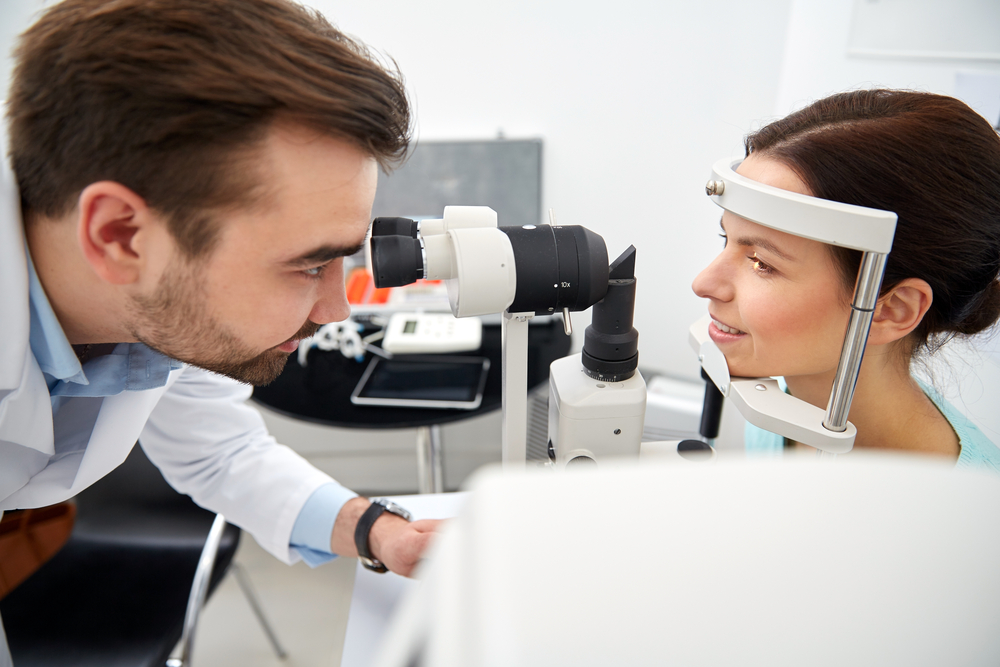
Comprehensive eye exams serve a purpose beyond monitoring your vision. When examining your eye structures, the doctor can identify many systemic conditions. They can identify these conditions before they present noticeable symptoms.
This noninvasive approach is possible because the eye provides a window for looking inside the body. They can do this by evaluating and analyzing the health of nerves and blood vessels in the eye.
What Tests Happen in a Comprehensive Eye Exam?
Medical History Assessment
During a comprehensive eye exam, one of the initial steps is for the eye doctor to inquire about your medical history. This information is crucial in determining potential factors contributing to vision issues.
By understanding your medical background, the eye doctor can tailor the tests required for your examination. These usually include specialized assessments. Moreover, your medical history provides valuable insights for the eye doctor to interpret your test results.
Visual Acuity Testing
The visual acuity test is a standard examination meant to check your ability to see and assess the sharpness of your vision. It focuses on both near and distant vision. The eye doctor uses a handheld or projected chart to assess distant visual acuity. The results of this test provide valuable information about your visual capabilities.
Dilated Eye Exam
This is the preliminary eye exam that eye doctors use to determine whether you have systemic conditions. During a dilated eye exam, the eye doctor uses particular eye drops to widen the pupil, allowing them to look inside the eye. They then check for the health of the blood vessels in the retina and those on it.
Optical Coherence Tomography
This is a computerized test that the eye doctor uses to get detailed 3D images of the retina. It generates color-coded cross-sectional images for the eye doctor to analyze the different structures within the eye. It is an excellent tool for determining the health of the blood vessels underneath the retina.
What Conditions Can a Comprehensive Eye Exam Detect?
Diabetes and Eye Health
Diabetes can impact the eyes even if your vision appears to be unaffected. What makes it particularly stealthy is that symptoms may not be evident. But signs of the disease can be detected through a comprehensive eye exam.
During such an examination, an eye doctor can identify early or developing indications of diabetes. Remarkably, experts discovered around 400,000 cases of diabetic retinopathy through eye exams in 2017, before any formal diabetes diagnosis. Detecting diabetes-related eye issues early is crucial in minimizing the potential damage.
High Blood Pressure and Eye Health
Occasionally, the eye structures can experience bleeding even without apparent issues. Minor instances of ocular bleeding can occur during forceful coughing or sneezing. But they can also be a potential indicator of high blood pressure.
When ocular bleeding is linked to elevated blood pressure, it manifests as leaking vessels in the sclera. Also, prolonged untreated high blood pressure can lead to eye swelling. Persistent hypertension causes the arteries in the retina to become stiff. This is the main contributor to this swelling.
For more on how a comprehensive eye exam can detect health problems beyond vision, visit Opticore Optometry.
Author: Opticore Optometry Group











